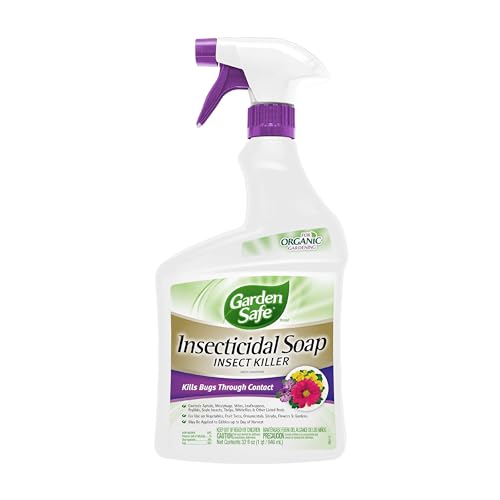5 summer garden pests experts want you to take immediate action against – they share how to get rid of them
Not acting fast allows these pests to kill off your plants


Our gardens are alive in summer, with blooms performing their best and pollinators flying between them to soak up nectar. But, there are some less beneficial insects that also thrive during the warmest months. These summer garden pests can lead to the downfall of your plants and crops if you don't act fast to eradicate them.
Summer provides ideal conditions for many pests that destroy plants to thrive, and unfortunately ornamental and edible plants alike fall victim to their attack. From tiny sap-sucking insects to more obvious leaf munchers, there are a few summer garden pests gardeners battle with every year.
But, with a few tips and tricks up your sleeve, you can easily tackle pest problems head on and keep your summer garden looking its best by getting rid of pests as soon as you see them. Here, pest control experts share five pests to look out for at this time of year, alongside tips on what to do when you spot them.

5 summer garden pests to watch out for
Just like spring garden pests and winter garden pests, destructive insects are sometimes difficult to spot. By examining the foliage of your plants regularly, particularly the underside of leaves where pests often hide, you can jump on pest problems early and keep your plants safe and healthy. Here are top tips from pest control experts:
1. Aphids
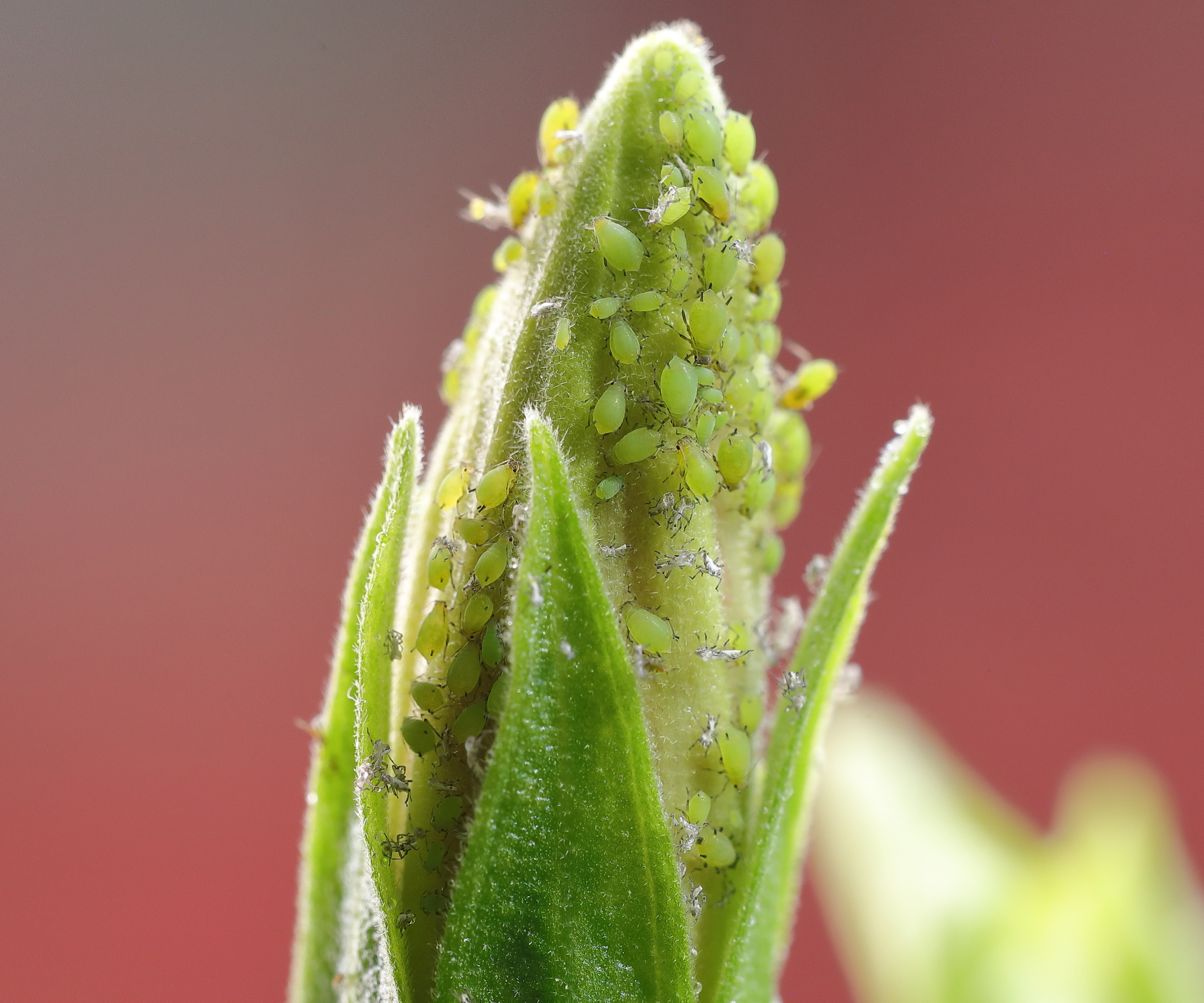
Every gardener will inevitably have to get rid of aphids at some point or another. These common pests don't discriminate when it comes to the type of plants they target, so it's essential to quickly control aphid populations if you spot any in your yard.
They're identifiable as soft body, green, black, red, or yellow insects that tend to be found in clusters on the tips of plants. They're sap-sucking insects that can stunt plant growth and leave foliage wilting and yellowing.
'One of the tricks in controlling aphids is to control ants,' says Dr. Tracy Ellis, an entomologist at FarmSense.
Design expertise in your inbox – from inspiring decorating ideas and beautiful celebrity homes to practical gardening advice and shopping round-ups.
This is because ants and aphids have a symbiotic relationship where ants 'farm' aphids for their honeydew, keeping them safe from predators in return.
'This sugary honeydew is a valuable resource for many ants who prevent the aphids from being attacked by their natural enemies such as ladybugs, syrphid flies or parasitic wasps,' Tracy explains.
'Getting rid of ants leaves the aphids vulnerable,' she adds.
You can also physically remove aphids, such as blasting them with water. Or, you can choose to use chemical options, such as insecticidal soap (from Amazon).
'Avoid spraying broad-spectrum insecticides, which can disrupt beneficial insect populations,' Tracy notes.
Another way to control aphids is by enlisting the help of natural predators that eat aphids. You can purchase ladybugs from Amazon for this purpose.

Dr. Tracy Ellis is an award-winning entomologist at FarmSense. She has worked for the USDA and other government agencies surrounding insect quarantine enforcement and eradication programs. She also has extensive experience in working with farmers, stakeholders, and communities surrounding pest detection, monitoring, regulation, and suppression tactics. Her research has significantly impacted biopesticide discovery, innovation, and commercialization.
2. Red lily beetles
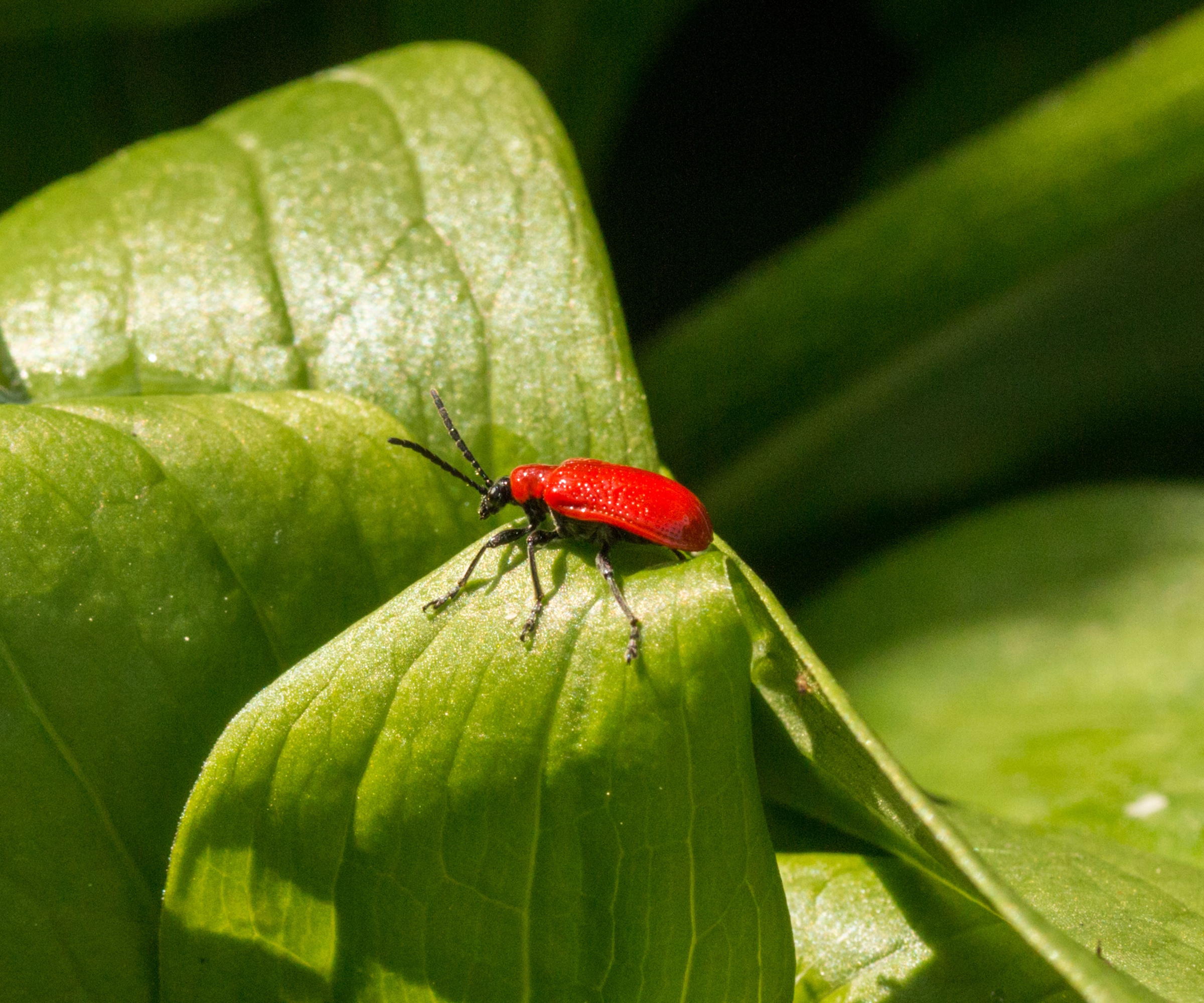
If you grow lilies in your yard, as well as fritillaries, keep an eye out for red lily beetle this summer. They're quite obvious to spot, bright red in color and measuring six to nine millimetres.
'They are bright red, sneaky, and ruthless, they skeletonize lilies in days,' says Nicole Carpenter pest control expert and President of Black Pest Prevention.
'Manually check daily and crush the adults and check leaf undersides for orange eggs. The larvae cover themselves in excrement as camouflage. Wipe them off and dispose,' she advises.
Other methods to control lily beetle populations include using neem oil (from Amazon). Neem oil on plants disrupt pest development and feeding. It can also help manage plant fungal problems.
'Neem oil works if applied early in the season. After larvae hatch, it's less effective,' Nicole describes.
It's also wise to plant lily plants away from fritillaries to reduce the spread of lily beetles.

Nicole Carpenter started working at Black Pest Prevention when she was in high school. She continued working there while attending N.C. State University and is now the President. She advises on pest control in backyards and helps with pest control in Charlotte and serves both North and South Carolina.
3. Mealybugs
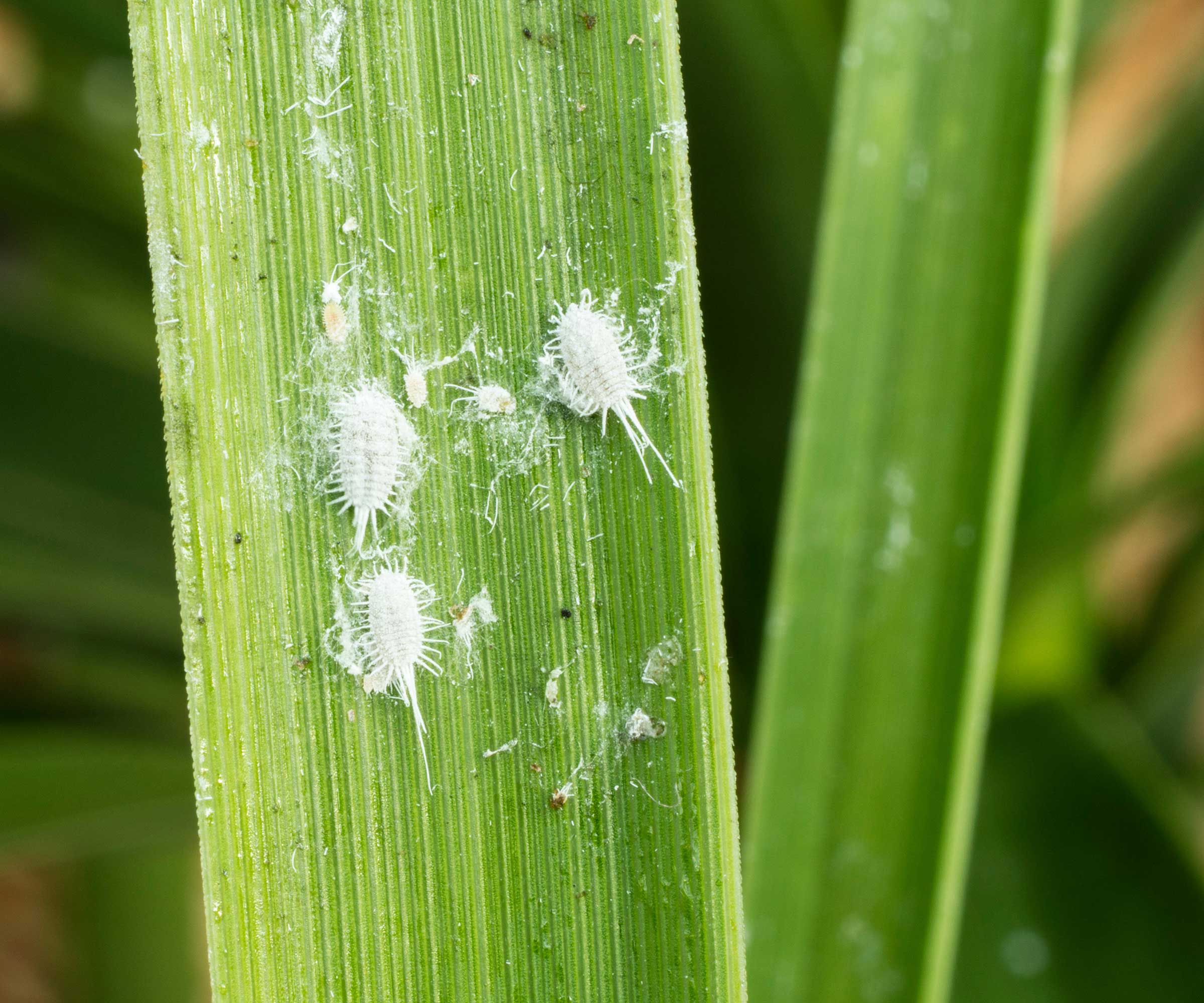
Mealybugs are also common summer garden pests to watch out for this season. Citrus trees, grape vines, and ornamental shrubs are particular favorites among mealybugs.
'Mealybugs, like aphids, secrete sugary honeydew that is a resource protected by ants. Controlling ants allows beneficial insects to make an impact,' Tracy says. 'In the interim, hand removal combined with insecticidal soap according to label directions will suppress populations,' she adds.
Insecticidal soap (available at Walmart) is an effective way to get rid of mealybugs. It essential dries them out and suffocates them.
'Mealybug populations can unexpectedly explode because they generally start in the nooks and crannies of growing tissue and take advantage of any new growth where inspection should focus,' Tracy says.
'Mealybugs may leave scars and obliterate certain vulnerable plants; locate and remove the most impacted plants from the garden and solarize them before adding to the homemade compost pile,' she advises.
Solarizing is a good way to combat mealybugs: 'Solarizing to destroy the insects is achieved by sealing the infested plant(s) in a plastic bag, leaving it in the sun usually for several days until the temperature exceeds 105°F,' Tracy describes.
4. Spider mites
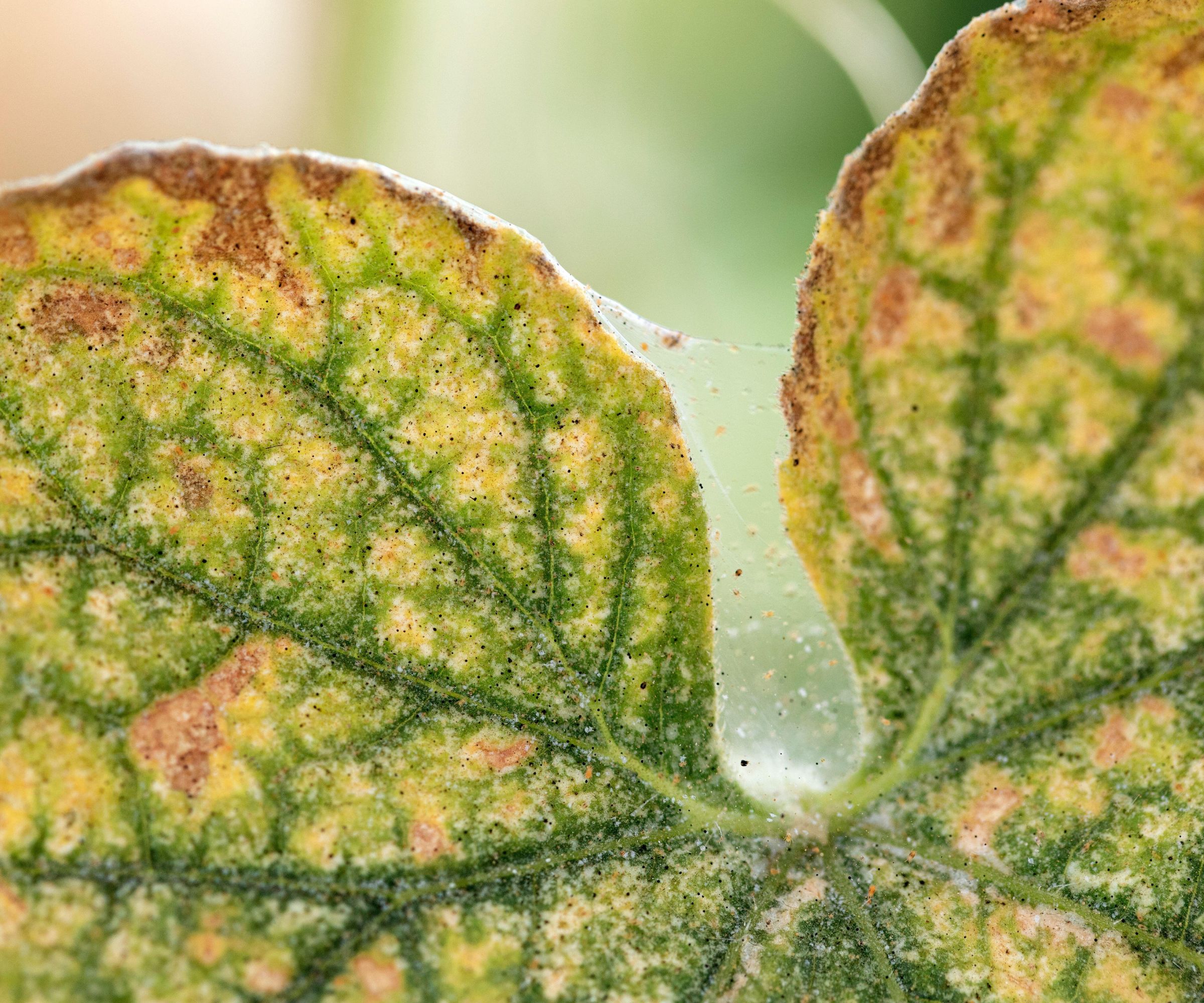
Spider mites can be harder to spot, due to their tiny size. Cobwebs with little red dots are the giveaway.
These pests are a particular nuisance in kitchen gardens, feeding on beans, cucumbers, melons, and more. They can also take up residence indoors, as spider mites on houseplants is also a common problem.
'Spider mites thrive in hot, dry dusty conditions; therefore changing the conditions by high washing of the plant with insecticidal soap, increasing the humidity may help bring the population down to tolerable levels until the season is over,' Tracy suggests.
Blasting the affected plant with water can also help get rid of spider mites, especially if it's only a small infestation.
'If you have a chronic spider mite problem, such as on your tomatoes every year, you should consider purchasing and releasing mite predators throughout the season to promote beneficial predator establishment,' Tracy suggests.
Phytoseiulus persimilis is thought to be the most effective spider mite predator. You can actually purchase Phytoseiulus persimilis from Amazon to apply to your affected plants.
5. Tomato hornworms
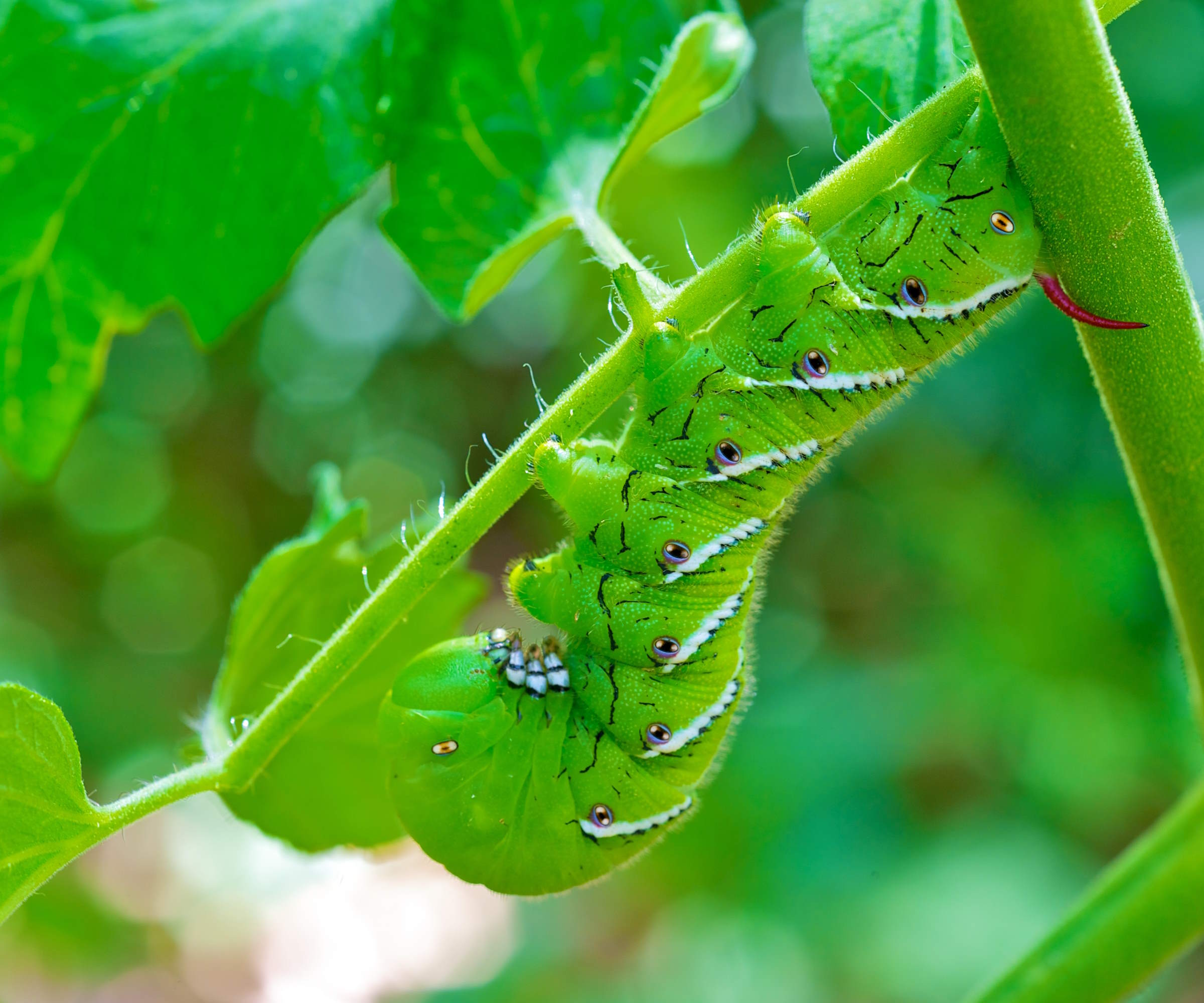
If you grow tomatoes every year, then tomato hornworms are the summer garden pests you'll want to regularly check for among your crops.
'These are big, green caterpillars that strip tomato plants overnight,' describes Nicole. 'Pick them off and let braconid wasps finish your work (leave any with white cocoons),' she advises.
Handpicking is perhaps the most effective way to get rid of tomato hornworms, although it is time-consuming. Once picked off, place them in a bucket of soapy water to dehydrate and suffocate them.
You can also control tomato hornworm populations by applying Bacillus thuringiensis (from Amazon) to the foliage of your tomatoes. This contains beneficial bacteria that targets caterpillar insects.
You can also encourage natural predators and other beneficial insects to take care of this pest problem by opting for tomato companion plants like marigolds.
FAQs
How do you protect crops from deer and rabbits in summer?
To protect crops from deer and rabbits in summer, consider putting physical barriers in place. This includes chicken wire cloches (from Amazon) or even growing crops in a greenhouse. You can also place pest-repellent plants nearby, such as lavender and rosemary, which have strong scents these animals find unpleasant. Another method involves installing an ultrasonic animal repellent (from Amazon) to deter them from the area.
There are lots of things you can put in place to deter these pests as a precaution. For example, use spices that deter common garden pests or fragrant plants that repel many pests. The below pest control kit can also help you protect your garden plants this summer:
Shop pest control essentials

Tenielle is a Gardens Content Editor at Homes & Gardens. She holds a qualification in MA Magazine Journalism and has over six years of journalistic experience. Before coming to Homes & Gardens, Tenielle was in the editorial department at the Royal Horticultural Society and worked on The Garden magazine. As our in-house houseplant expert, Tenielle writes on a range of solutions to houseplant problems, as well as other 'how to' guides, inspiring garden projects, and the latest gardening news. When she isn't writing, Tenielle can be found propagating her ever-growing collection of indoor plants, helping others overcome common houseplant pests and diseases, volunteering at a local gardening club, and attending gardening workshops, like a composting masterclass.
You must confirm your public display name before commenting
Please logout and then login again, you will then be prompted to enter your display name.
